SIPAYIK — For almost 1,000 pounds of invasive European green crabs each week, Erik Francis’ traps are the end of the line.
He pulls one from the water. Armed with one beefy “crusher” claw and one finer “cutter” claw, the crustaceans are notoriously aggressive and insatiable predators.
Francis is the steward of the Sipayik Community Clam Garden, an industrious mariculture project that sits yards offshore of his home community, the Passamaquoddy Reservation at Pleasant Point (Sipayik), population 600.
Over 1 million soft-shell clams are growing there under Francis’ diligent watch. He is learning to foster them to size so the clams can feed his Indigenous community — and not the expatriate crustaceans that see his garden as a buffet.

One crab can consume 40 juvenile clams in a day. They are a threat so great the Maine Department of Marine Resources’ only regulatory ambition is to reduce their population: they should be eaten or destroyed, a spokesman said.
So the clam farmer isn’t sparing any sympathy for the crabs.
“Wakey wakey!” he says, giving a quarter-full trap a shake just after sunrise. “Eviction time.”
Three or four times a week, when Half Moon Cove’s muddy flats are laid bare by the receding tide, Francis picks his way through the garden to check the nets protecting the clams. When the tide rises, he jets in a skiff from Eastport to the cove to haul seven crab traps sentried in the channel outside the garden.
He’s trying to learn the crab’s seasonal schedule and save his crop.
When he’s done with the crab, he flings it back into the trap, where it arrives with a sickening crunch.
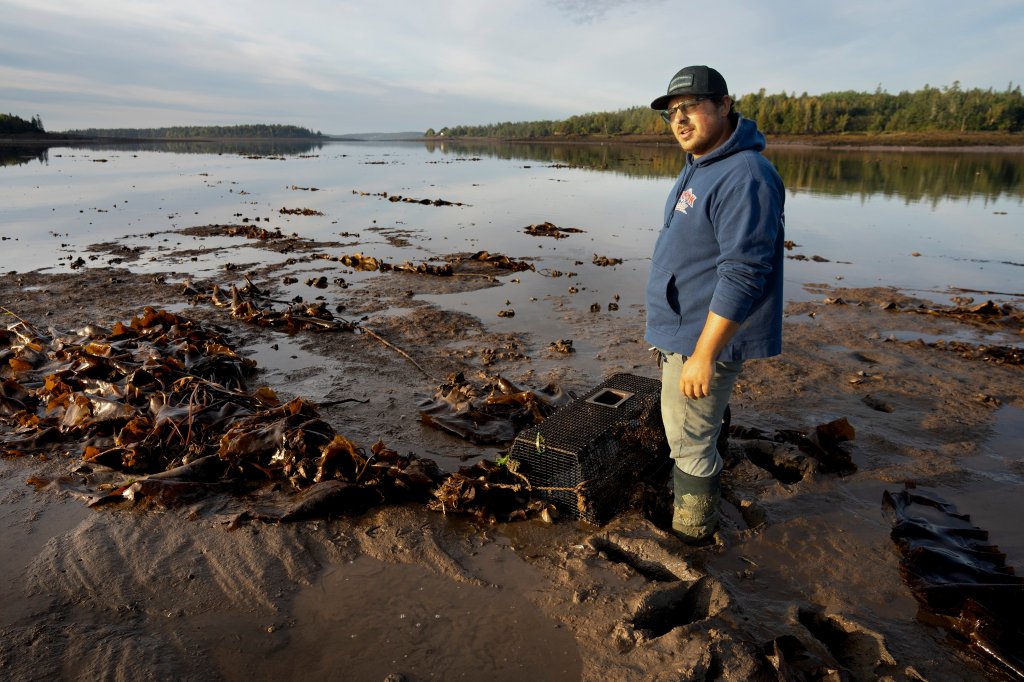
‘YOU COULD ALWAYS COUNT ON CLAMS’
In Brian Altvater’s youth, clams were a staple.
“You could always count on clams being down there year-round,” the 69-year-old tribal member and Sipayik resident said.
In his memory, Altvater sees deep layers of clam shells. The clam beds were a sort of pantry for the commons.
That’s not been the case lately in Half Moon Cove, where soft-shell clams face a trident of threats.
Heavy harvesting has strained the resource, community members say.
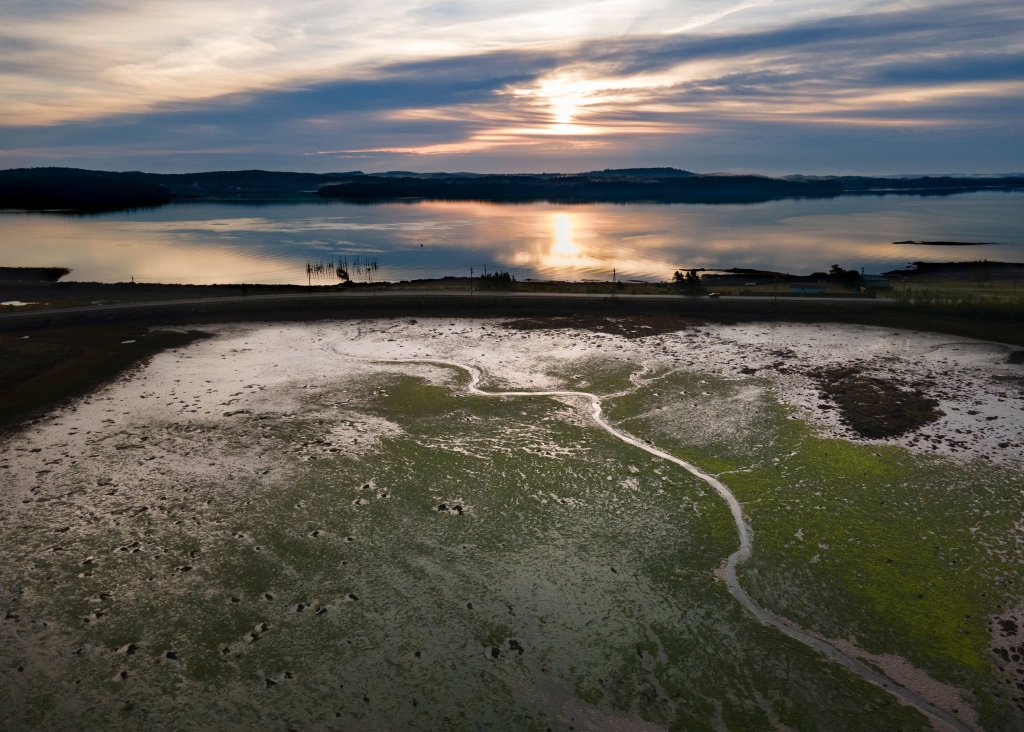
In the 1930s, President Franklin D. Roosevelt backed a tidal power project on Passamaquoddy Bay. Although it was never completed, an earthen dam— atop which state Route 190 was built — remains, isolating Half Moon Cove from Passamaquoddy Bay.
Now, the north Atlantic’s powerful tides rush into the cove, deposit sediment and trickle out, turning what was once a hard-bottomed ocean bed to a muddy and ecologically barren landscape.
Between 2 and 11 feet of silt have accumulated in Half Moon Cove, a 2022 U.S. Army Corps of Engineers survey found, since soundings were taken in 1887. Little thrives in those conditions.
Then there are the crabs.
Voracious and pervasive, the green crab arrived in the U.S. in the ballast of ships in the late 1800s. They out-compete native species for food and will dig 6 inches to catch clams.
A 2016 study found that soft-shell clam landings in Maine declined 75% in 40 years. Green crab predation is thought to be largely responsible for the drop.
The clam garden was a response to all those things, its virtue affirmed by a 2015 tragedy: In November of that year, Majik Francis, a young Passamaquoddy father, drowned when his canoe overturned in Half Moon Cove as he searched for productive clam beds.
In 2022, the garden’s early volunteers planted a quarter-million clam seedlings, secured under 12-by-12-foot squares of netting seated in the mud, beyond a crab’s reach.
Francis was hired as the garden’s steward in 2023.
“If we don’t try to at least take the step (of) reintroducing the clams in the area, you know, that’s going to be us failing the clam,” he said. “We have a cultural connection with the clam and if we don’t maintain that, we failed that species and we also failed ourselves.”
TRYING NOT TO FAIL THE CLAM
The garden was always an experiment.
With an annual price tag of about $75,000, it’s still not clear whether it can sustain itself economically, Francis and Bob Wood agree.
Wood was the director of the Downeast Fisheries Partnership in 2022 and the catalyst for making the garden a reality, with the financial backing of the Soule Foundation and anonymous donors. He has since become the tribe’s director of planning and resilience.
Wood got funders and clammers in a room together, paving the way for the Builders Initiative and the Broad Reach Fund to cover several years’ worth of labor and materials.
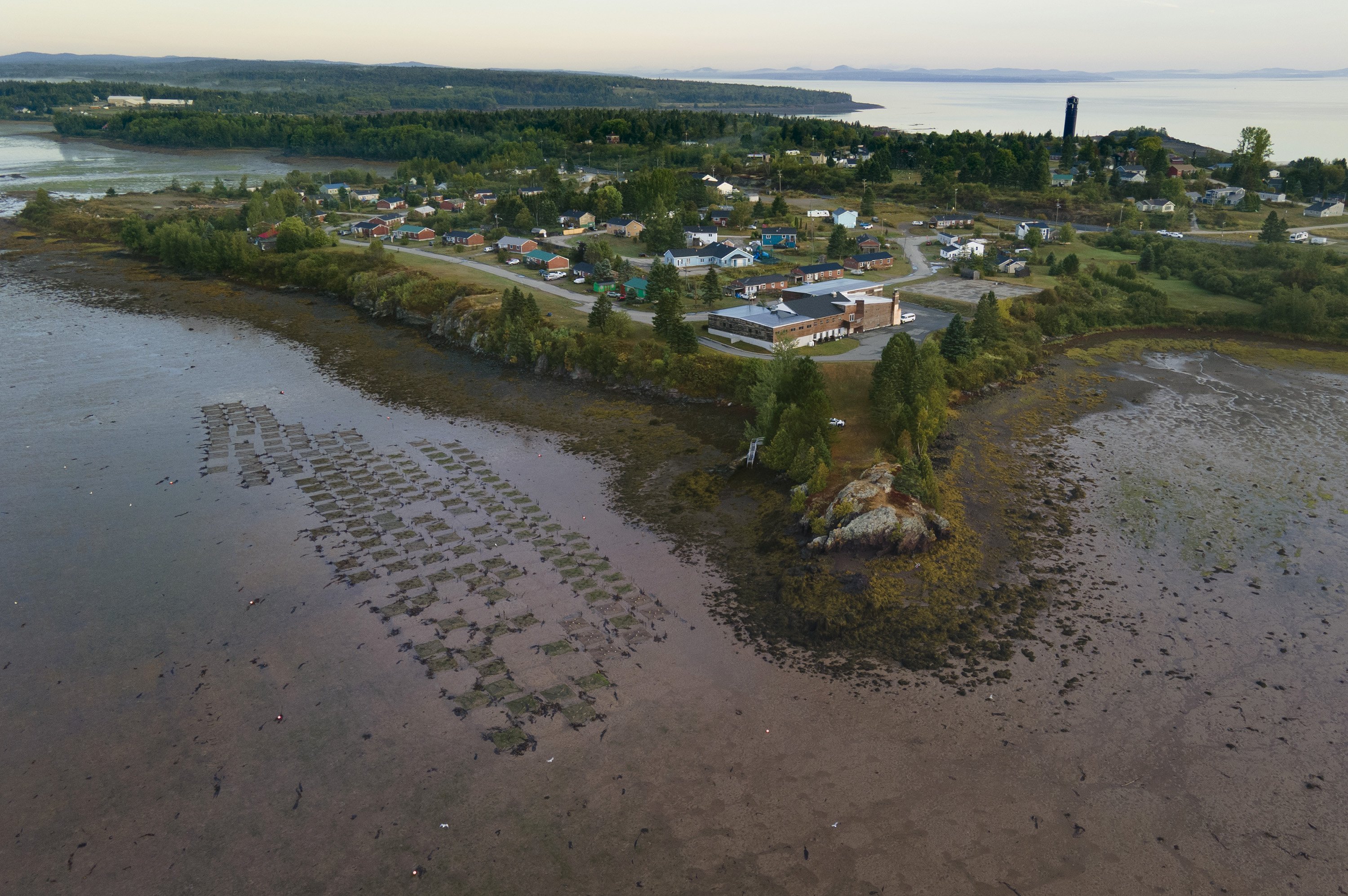
Today, Francis tends 170 active plots.
That’s 24,500 square feet seeded with 1.25 million clams, making it the largest soft-shell clam garden in the world, according to those behind it. To his delight, Francis has found wild-born clams under his nets as well — evidence that his netted refuge is working.
The first year, clam gardeners learned the importance of those nets the hard way.
According to an initial agreement with the Army Corps of Engineers, the garden’s tenders removed the nets before winter so ice didn’t yank them from the muddy bed and release the debris into Passamaquoddy Bay.
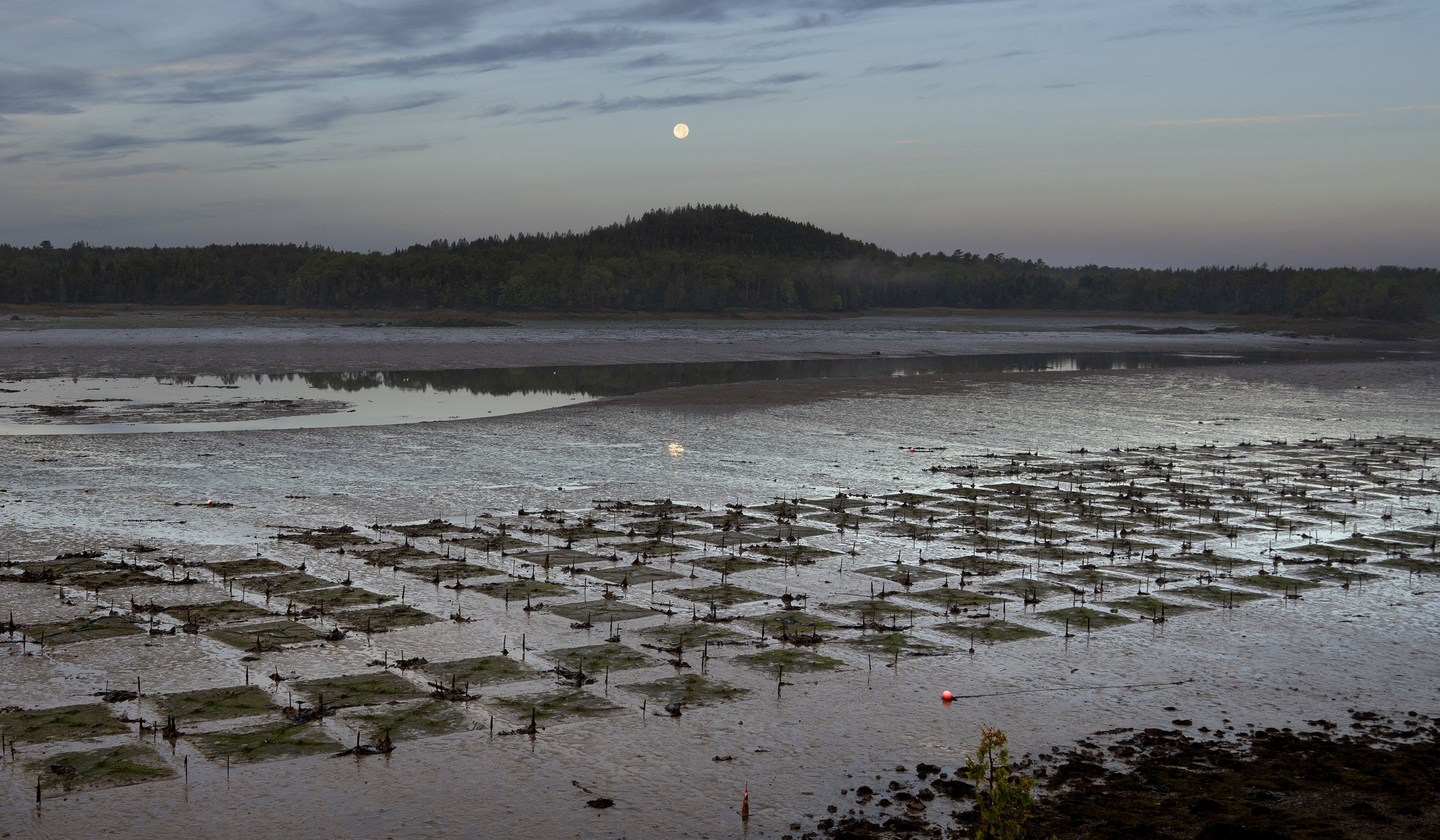
The result?
“There were literally none left. Not a single (clam) survived,” Wood said.
Now, they trap and weigh the crabs to find out when they go dormant for the winter. That research is funded with the same grants used to fund the garden’s operations through 2026.
As for the causeway: “I’m hoping in my lifetime I’m going to see that gone,” Francis said.
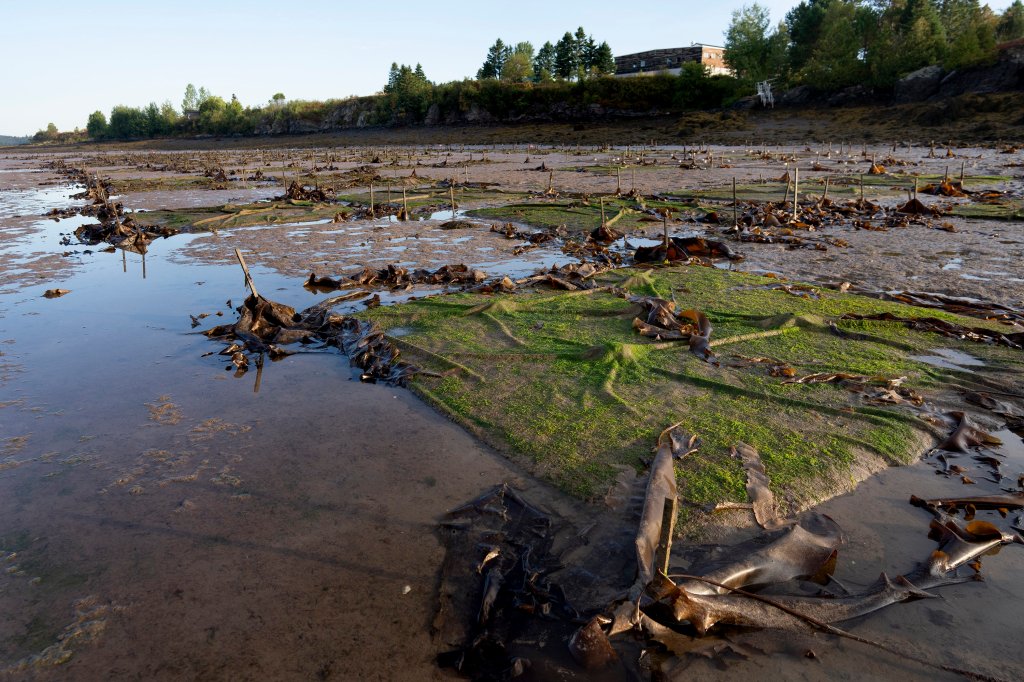
The Army Corps of Engineers is a year or two away from completing a study of the infrastructure, said Keith Hannon, a study manager with the corps’ Boston office.
The final report will analyze how much of the dam should be replaced by a bridge in order to benefit the cove, and what the project might cost. A funding source for that renovation is unresolved.
In the meantime, Francis is busy tending the world’s largest clam garden. He postponed the first harvest from this summer to next. He didn’t want to disappoint his community with undersized clams, he explained.
It’s an endeavor Francis takes pride in. He thinks the Passamaquoddy Tribe at Sipayik can, too.
Reuben M. Schafir is a Report for America corps member who writes about Indigenous communities for the Portland Press Herald.

We invite you to add your comments. We encourage a thoughtful exchange of ideas and information on this website. By joining the conversation, you are agreeing to our commenting policy and terms of use. More information is found on our FAQs. You can modify your screen name here.
Comments are managed by our staff during regular business hours Monday through Friday as well as limited hours on Saturday and Sunday. Comments held for moderation outside of those hours may take longer to approve.
Join the Conversation
Please sign into your CentralMaine.com account to participate in conversations below. If you do not have an account, you can register or subscribe. Questions? Please see our FAQs.